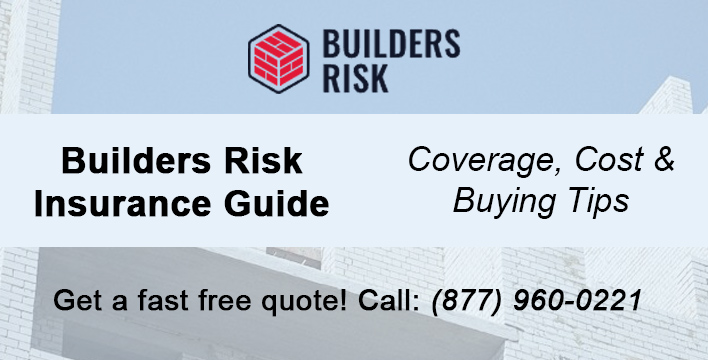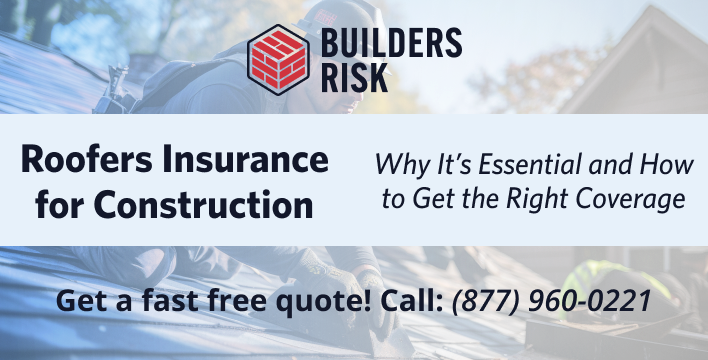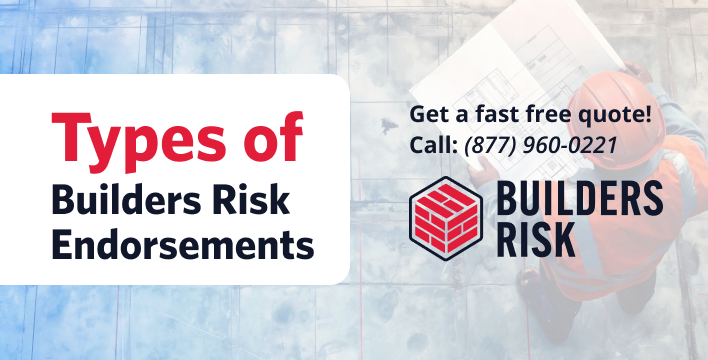
5 Things Clients Want To Know Before Hiring A Contractor
December 21, 2022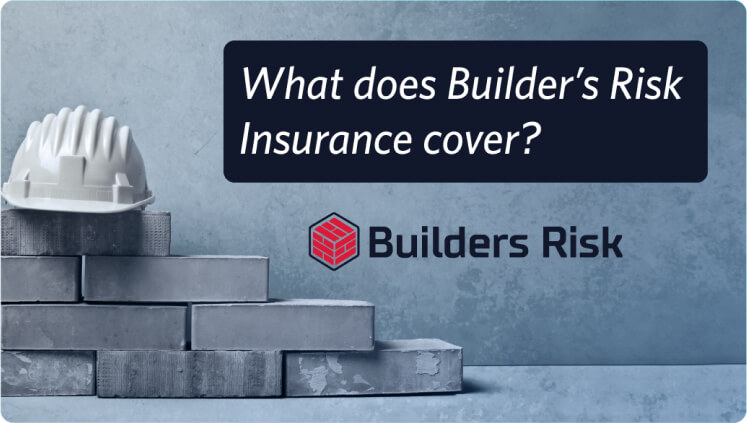
What does Builder’s Risk Insurance cover?
January 14, 2024
5 Things Clients Want To Know Before Hiring A Contractor
December 21, 2022
What does Builder’s Risk Insurance cover?
January 14, 2024Homeowners Coverage vs Builder’s Risk Insurance

Are you familiar with Builder’s Risk Insurance yet? This is a type of insurance for your small contractor business. In this article, we’ll look at why you will need Builder’s Risk coverage when renovating a home.
Here’s the short answer. Your client’s Homeowners coverage will not protect their home during the course of construction.
The good news is that you don’t have to carry the financial risk that comes with a building renovation. The course of construction insurance is available.
So, what is the difference between the two? In a nutshell, Homeowners insurance covers an existing residence while Builder’s Risk insurance protects a home under construction or renovation.
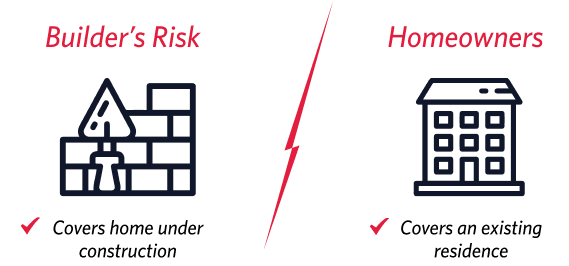
Builder’s Risk insurance coverage
Builder’s Risk insurance for your small contractor business protects buildings and structures while they are in the process of being built. It also covers other types of property. For instance, building materials, tools and equipment, fixtures, foundation, and fencing. It may surprise you that it even includes landscaping, for example lawn, trees, and paved areas.
Building materials and equipment covered can either be on the construction site, in storage at a different location, or in transit.
The coverage typically protects your construction or renovation project from property damage. 4 Common causes include, but are not limited to:
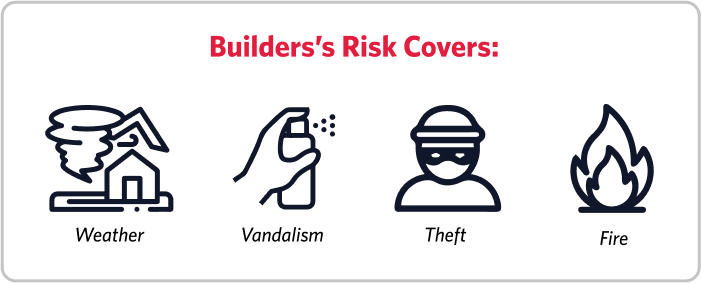
However, the policy often excludes natural disasters, such as windstorms, earthquakes, and floods.
Builder’s Risk insurance is also for soft costs coverage. This is a great benefit. It helps cover expenses incurred if your project is delayed. By adding onto your policy you can cover your business for project delays.
Homeowners insurance coverage
Homeowners insurance, like Builder’s Risk, is a form of property insurance that protects you from financial losses in the event of damage to the building under construction. However, Homeowners will not do the same job as Builder’s Risk insurance for your small contractor business.
The policy typically includes:

Dwelling Coverage
This helps pay for the rebuilding and repairing of the home due to damage caused by fire, wind, hail, and lightning. Damage from floods or earthquakes is usually excluded from a standard Homeowners insurance policy.

Structure Coverage
Provides insurance coverage for other structures on the premises, such as a detached garage, tool shed, swimming pool, and fencing.

Personal Property Coverage
Protects your client’s items, such as furniture, clothing, and electronics.

Loss of Use Coverage
Reimburses for additional living expenses incurred, up to policy limits, if a covered loss makes the home temporarily uninhabitable while being repaired or rebuilt.

Personal Liability Coverage
This protects you against legal claims. It can help pay your attorney fees, damages if held liable, and medical costs should a person be injured.
Insurance for your small contractor business
At Builder’s Risk Insurance company, we help you find insurance for your small contractor business and advise on the correct coverage that best suits your needs and budget. Save time and money by talking to one of our agents today at (877) 960-0221. We get quotes from leading insurance carriers.
Builder’s Risk insurance for homeowners will give you protection for as little as 1% of the construction costs. A small price to pay for a huge amount of protection. You may have Home Insurance that you’re happy with, but is it enough for the risks that come with construction? Separate coverage is always worth considering.
Here, we’ll look at 4 situations where Builder’s Risk Insurance for homeowners beats out a typical private policy.

New Builds
This one may seem obvious, but sometimes new owners don’t realize Homeowner’s Insurance only covers finished buildings. If your building has no lockable doors or windows, Builder’s Risk is the best way to protect the project’s materials and temporary structures.

Renovations
So, Homeowner’s Insurance doesn’t cover new builds. But, how about an addition to your property? The fact is, the risk of an unoccupied building is still present. Builder’s Risk is specifically designed around these hazards. For instance: while your roofer applies new shingles, the frame is exposed to the elements. Storms that don’t normally pose a threat could inflict huge damage.
Water damage has risen to 10% of claims with more extreme weather patterns. Builder’s Risk insurance protects against these damages and more, including wind, fire, lightning, and blackouts – whereas Homeowner’s Insurance does not.

Saving Money
For home owners overseeing low-cost jobs, Home Insurance and Contractor’s Coverage may seem like enough and Builder’s Risk Insurance can sound like an unnecessary hassle. However, it could mean saving 25-30% in insurance costs, depending on circumstances. This is because it’s a temporary policy that covers only the structures and materials during the course of construction.
Well defined Builder’s Risk Insurance for homeowners means not paying to cover things like electronics, clothing, or inhabitants that may be absent.
Your own Builder’s Risk policy protects against negligent work too, helping you easily make up for financial losses caused by the contractor.

There Are Project Specific Risks
Unlike Homeowners insurance, Builder’s Risk is highly customizable. First, you set the period, usually 6, 12, or 18 months. Typical home insurance has strict limits on renovation time – if any is allowed. Secondly, Builder’s Risk can cheaply include extensions based on your particular project.
Unlike Homeowners insurance, Builder’s Risk is highly customizable. First, you set the period, usually 6, 12, or 18 months. Typical home insurance has strict limits on renovation time – if any is allowed. Secondly, Builder’s Risk can cheaply include extensions based on your particular project.
If your property is in California or Ohio, you can add an extension for losses caused by earthquakes. If you’re environmentally focused, there are add-ons to maintain clean air and replace or repair renewable energy sources damaged during construction.
Some perils are more likely than others. Home insurance just can’t be tailored as easily as Builder’s Risk. It covers a much wider range of possibilites, giving you less to worry about.
Related posts

